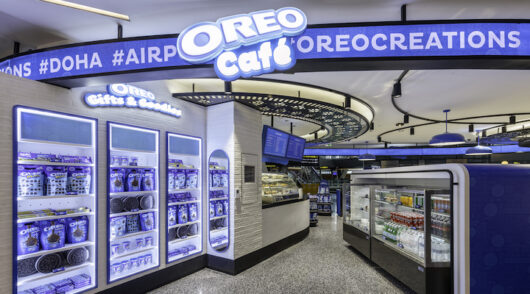It may be a trend that online retailers such as Asos or fast fashion giants such as Zara have been driving for a while, but now it appears the local big guns are in on it, too.
According to the fashion boss of one of Australia’s largest retailers, entrenched notions of fashion collections are changing as women become more flippant with their wardrobes.
Nicole Naccarella, GM of womenswear at Myer, says the department store is now stocking both winter and summer seasons at the same time as shoppers change their habits.
“We’ve totally changed the way we deliver international designers,” says Naccarella in an interview with The Australian newspaper today.
In the past, fashion retailers – from small boutiques through to large chains – would buy according to seasons, with items such as warm coats stocked in winter and skimpy bikinis in summer.
This meant the delivery of clothes from designer labels based in the northern hemisphere, notably the US and Europe, would often be delayed in Australian stores by up to six months.
“Historically, we would hold the product in the northern hemisphere and deliver it in line with our season,” says Naccarella.
“So McQ by Alexander McQueen would get delivered in the northern hemisphere in February, but we wouldn’t deliver it into our business until August.”
Customer expectations have moved past this in the last few years, however, due to a mix of e-commerce, digital media, and an increasingly competitive market.
International online shopping sites, such as Net-A-Porter and Asos, are making it easier for Australians to buy trends now rather than wait for delayed bricks and mortar collections.
Online media and the expansion of international fast fashion labels has also made Australian consumers more aware of what’s trending on the other side of the world.
“Women with the disposable income to buy a designer coat will buy it in November and put it away because they have to have it, and the fashion-forward girls buy all year round,” says Naccarella.
Myer this year delivered its spring imports in April – traditionally a time when autumn collections would be brought in – with Naccarella saying the long summer helped affirm this decision.
She also says the department store is pushing its internal labels, in line with a broader trend seen among other traditional multi-brand Australian fashion retailers, such as General Pants Co.
Numerous recruitment agents have told Inside Retail that many chains have been hiring design and product developers in droves in response to this trend the last two years.
Those chains already designing internal lines are being forced to bring trends to Australia faster, with it no longer profitable to simply copy European catwalks six months after the fact.
“It’s not new; but even Witchery and Just Group are building their design and development teams,” says Garry Connell, director, Trak Recruting.
Naccarella told The Australian that Myer’s private-label offerings, such as Reserve, and designer branded inhouse labels, such as Wayne by Wayne Cooper, are today some of its most profitable labels.
She says the industry is realising the control it can have over its own ranges, with Myer’s internal brands its best performing and delivering margins of up to 70 per cent.
“Thirty years ago we weren’t developing in-house brands; we were buying them from national and international brands, so being in control of our own destiny is better,” she says.
“They’ve been hugely successful because we picked up a whole market of women who can’t afford the main line,” she says of inhouse designer collections, such as Wayne by Wayne Cooper.





